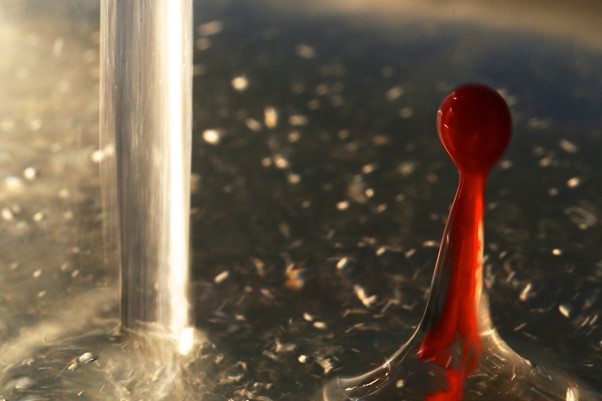Managing leaks of blood and beyond
By Amita Bhakta

On 28th May 2021, the world celebrated Menstrual Hygiene Day. Over the past decade, the water, sanitation and hygiene (WASH) sector has paid significant attention to supporting young adolescent girls during puberty. The marks of blood for the first time on the school uniforms of girls and the subsequent implications of the onset of menstruation for teenagers, requiring the use of effective menstrual hygiene products, gender sensitive toilets and good hygiene promotion techniques has been well discussed. Adolescent girls go through visible markers of change and attend community-based schools, where wider education programmes can easily incorporate menstrual hygiene into lessons. But, when we go beyond the classrooms and into the community, the focus of what constitutes menstrual hygiene, and hygiene overall, begins to expand. To understand this and to provide effective and inclusive hygiene for all, we need to go back to the people.
Menstrual hygiene matters for girls and women across a significant part of their lives. The unpredictability of menstruation at menarche as a marker of the growth of young girls is well-discussed. Yet, menstrual hygiene is important for women throughout their lives. One stage of women’s menstrual journeys which is too often forgotten is the perimenopause, or the transition to the menopause, when menstruation permanently ceases. Discussions around the perimenopause are only just recently beginning to get some attention in the U.K., with long-standing stigmas seemingly making it confined to policies to support women at work. Even then, we seem to neglect many aspects of the perimenopause, because we neglect the critical step of putting the perimenopausal body at the centre. I think back to my field research on the WASH needs of perimenopausal women in Ghana in 2016. I was able to hold discussions using adapted techniques about the every day realities of the perimenopause with women aged between 45 and 70 years in Accra and Kumasi. The voices of women on the experience of managing erratic and heavy menstrual periods in settings where WASH infrastructure is often inadequate, if not lacking, were being recorded in Twi and Ga on my digital recorder, for the very first time. Behind the (ever so slightly more public) discussions of hot flushes and sweating, lies a very messy reality of trying to manage significant and uncontrollable flows of blood during the perimenopause. Women told me of how they were privately and silently dealing with gushes of up to 6 tablespoons of menstrual blood, which had a real impact on their daily lives. After a lifetime of using menstrual cloths, suddenly they turned to using commercial sanitary pads they could not really afford on a low income. Menstrual hygiene became a narrative of layering up pads onto menstrual cloths, or cotton wool onto cloths in some cases due to cost of pads, in efforts to absorb an irregular flow of blood during a stage of their lives upon which there is a great silence in society. The silences around the messy end of menstruation at the perimenopause are far greater than the murmurs around menstruation itself.
Going to perimenopausal women in Accra and Kumasi paved the way forward for what really constitutes menstrual hygiene’ to reach a new level. Discussions with women started with blood simply soaking straight through menstrual cloths, and took an unexpected detour to community wastewater drains. How did we get there? Menstrual hygiene during the perimenopause needed the additional support of bathing two or three times a day to wash away heavy flows of blood, along with a bigger laundry pile of blood-stained clothes to wash. In communities where menstruation is already taboo, the silence shrouding the journey to the end of menstruation became clear through the lack of infrastructure to support it. Perimenopausal women faced the prospect of staining their bathing and laundry water deep red with blood, and disposing it into uncovered drains and even into the open street, for all to see (including men). When visiting the community toilets, perimenopausal women are faced with lack of facilities for the discrete disposal of very heavily soiled pads and cloths, emphasising how their bodies with irregular menstrual bleeding are erased from the infrastructural landscape. Ensuring effective menstrual hygiene requires us to address the lesser discussed aspects and to listen to women who menstruate at different life stages, and talk to the mothers at the school gates as well as the adolescent girls inside the classroom. This can then ensure that community-based toilets, bathing, laundry, water supply and wastewater infrastructure can become part of the process of managing menstrual blood across the life course.
For all the attention being paid to the management of blood on Menstrual Hygiene Day however, there is sparse consideration of other bodily fluids in the field of WASH. In recent years, I have been part of a group of practitioners and researchers who are trying to raise awareness on another taboo around the involuntary loss of urine and faeces, or incontinence, emphasising the long-standing focus of public health engineering on excreta management. Even within this, there remain gaps in raising awareness about an issue which affects people at all stages of life, and the need for support for people with incontinence ranging from pads and nappies through to bed pans, commodes, and accessible toilet infrastructure, despite all the parallels it has with menstrual hygiene. Both sanitary pads and incontinence pads are for managing fluids. It could also be argued that a handkerchief performs the same role as a sanitary pad, as it absorbs liquid from the nose, and a debate on disposable and reusable handkerchiefs in a similar way to pads could be food for thought. And what of those leaks of milk confined to breastfeeding women in a patriarchal society, and provision of wider infrastructure such as lactation rooms in facilities often designed and built by men?
The lesson to be learned is that for the WASH sector to enable good hygiene and support the management of bodily fluids in an inclusive way, we must go back to the human body itself. Menstrual hygiene management has a focus on absorbing blood (and even then, largely that of young, able-bodied girls), but why does the related infrastructure not focus on the person? We need to put people back at the centre to design inclusive infrastructure and find appropriate mechanisms to manage the leaks of menstruation, incontinence, sweat and beyond, to really ensure good hygiene for all.
